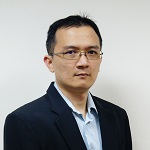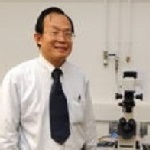Development of a scale-up human eye model to investigate aqueous humour hydrodynamics due to outflow obstruction within the trabecular meshwork
Monash Warwick Alliance Catalyst Fund – May 2019 Round
The inside of the human eye is divided into three sections called chambers. The chambers in front of the lens, named the Anterior and Posterior chambers, are filled with a clear watery fluid called the aqueous humor.
Glaucoma is an eye disease that is reported by the World Health Organisation to affect around 105 million people. In a normal eye the aqueous humor is continuously produced and drained. In glaucoma, structural changes in eye tissue restrict the outflow of aqueous humor from the anterior and posterior chambers causing the build up of pressure within the eye. Such increase in pressure can cause damage to the optic nerve which may lead to losses in the peripheral visual field. If left untreated, glaucoma can cause permanent blindness.
Studies of the movement of aqueous humor are rarely carried out experimentally due to the sensitive nature of the human eye to physical contact, which effectively rules out any invasive measurement techniques. Consequently, experimental studies involving the human eye are often carried out using donor eyes, in which the experimental conditions are difficult to control and are rarely available due to the difficulty in sourcing donor eyes.
With Alliance support, Dr Ean Hin Ooi, Monash University and Dr Isaac Kuo-Kang Liu, University of Warwick are leading a novel research team that combines different disciplines from science and engineering. They will seek to develop a scaled-up model of the anterior and posterior chambers of the eye which can be used to study the movement of aqueous humor under conditions that mimic healthy and glaucomatous eyes.
It is hoped that this study will facilitate the management of glaucoma by gaining a better understanding of the mechanisms underlying the formation and development of the disease. This could potentially lead to the development of better diagnostic approaches for glaucoma and improved ophthalmic drug delivery to treat the disease. These are likely to reduce an individual’s loss of health-related quality of life as well as the personal and societal economic burdens.
Principal Applicants:
 |
 |
|
Senior Lecturer, School of Engineering Monash University (Malaysia) |
Associate Professor (Reader), School of Engineering University of Warwick |
Co-Applicants:
|
Senior Lecturer, School of Engineering Monash University (Malaysia) |
Dr Ahmed Eissa Senior Research Fellow, Department of Chemistry University of Warwick |
